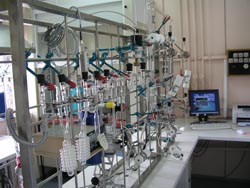Advanced carbon dating comes to Croatia
Radioactive 14C enters the Earth’s oceans as carbonate. It is also oxidised to carbon dioxide that is taken up by living plants and animals. Thus, 14C can be found in all previously living organisms as well as peat and organic sediment, oceans, lakes and groundwater. .The Radiocarbon Laboratory of the Ruder Boskovic Institute (RBI) in Zagreb has been carrying out 14C dating since 1969. The methods currently employed require 2–5 gramme samples of carbon. However, development of the Accelerator Mass Spectroscopy (AMS) method of direct 14C isotope counting has enabled the application of 14C dating to samples in the milligramme range. In fact, the method has been applied to the Shroud of Turin and the Dead Sea Scrolls .Implementing AMS requires converting carbon samples to graphite form. Researchers at the RBI developed the ‘Preparation of carbon samples for 14C dating by the AMS technique’ (AMS-14C) project to train researchers and develop graphite preparation methods, AMS measurement techniques, and control and data evaluation software enabling full modernisation of their facilities and capabilities. .Young scientists and a senior researcher trained at the AMS facilities at Scottish Universities Environmental Research Centre, University of Glasgow, UK (UGLA-SUERC) and experts from the Research Centre were hosted in the RBI laboratory for two weeks. .The researchers purchased equipment and materials for graphite preparation, upgraded existing preparation lines and measurement techniques and hired software specialists to develop controlling software for the new preparation line as well as to develop an integrated database. .Thus, the AMS-14C project resulted in modernisation of the existing liquid scintillation counting (LSC) 14C dating line, construction of a full operational graphite preparation line for AMS 14C dating, as well as extensive training and collaboration with scientists at the AMS facility at UGLA-SUERC. The RBI laboratory is now well positioned to participate in future international research projects. RBI and the Balkans should benefit from the creation of new commercial opportunities and the international research community will surely benefit from the EU funding that enabled investment in human and equipment capital for advanced 14C dating in Croatia.







